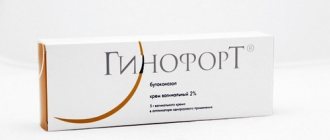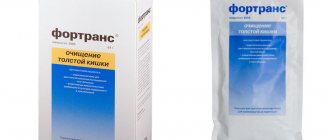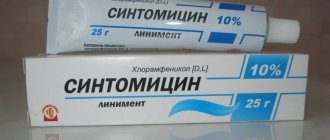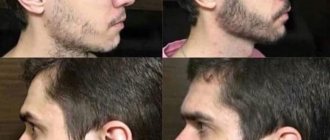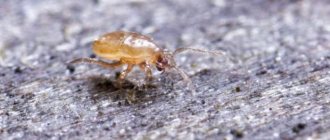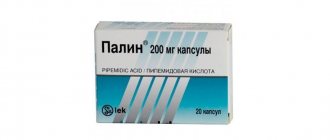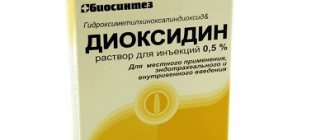Nettle is very beneficial for the body; it has a wide range of healing and medicinal properties. Known for a long time, nettle is often used as a wound-healing, diuretic, tonic, laxative, vitamin, anticonvulsant, and expectorant. Nettle is used in folk medicine to treat many diseases, used for various bleeding, hemorrhoids, kidney stones, cholelithiasis, choking, liver and biliary tract diseases, edema, constipation, heart disease, tuberculosis, bronchial asthma, bronchitis, allergies. Externally, nettle is used for open wounds, bleeding, skin diseases, and to strengthen and grow hair.
Description and types of nettles
The Latin name for nettle is Urtica. It represents a large genus of annual and perennial plants belonging to the class of dicotyledons from the nettle family. Almost all types of nettle are erect plants with one, rarely several stems, the height of which varies from 60 cm to 2 meters. The leaves have jagged edges, which may look like small notches or deep cuts that reach almost to the middle of the leaf.
The most popular types of nettles include:
- angustifolia nettle;
- hemp nettle;
- nettle pickulifolia;
- nettle Kyiv;
- stinging nettle.
Of all this abundance, only stinging nettle is used for medicinal and food purposes. The popularity of the plant is due to its specific chemical composition. Nettle leaves, roots and seeds are useful.
Stinging nettle contains a high content of ascorbic acid, rare vitamin K, carotene, chlorophyll, flavonoids, tannins, steroids sitosterol and ergosterol, as well as zoprenoids, coumarins and organic acids, lignans, which have an antimicrobial effect. It is known that nettle contains phytoestrogens that normalize human hormonal balance.
Nettle - prickly herb
nettle photo
Nettle is a plant familiar to everyone since childhood, especially if someone has been stung by it. Typically, nettle grows on forest edges, in ravines, along the banks of small rivers and streams. Nettle is often found near roads and people’s homes, so it is considered a weed and is destroyed during weeding. Nettle grass is very common in Russia, Siberia, Central Asia, the Caucasus and the Far East. Different types of nettle can be found in China, Canada, Japan and Korea, North America, Australia, Europe and Asia, and Siberia.
Nettles can reach a height of 1.5 to 2 meters. The nettle stem is tetrahedral in shape, erect, and the rhizome is branched and long. Nettle blooms from spring to mid-summer. The flowers are unisexual, greenish, collected in bunches into small inflorescences. Nettle is pollinated by the wind. Nettle leaves are dark green in color with oblong stipules. The shape of nettle leaves is coarsely toothed, ovate or lanceolate. Nettle seeds are small, collected near the stem in the axils of the upper leaves.
In Russia, two types of this plant are most often found: stinging nettle and stinging nettle. Their medicinal properties are described in medical books. Stinging nettle is smaller than stinging nettle, but the latter has found wider use in folk medicine. But such types of nettle as ball-bearing and nettle are not used for medicinal purposes at all.
Nettle is called zhguchka, zhegala, zhaluga, and Estonians call it “the bachelor’s kiss,” and there is even a popular saying: “Nettle is young, but it already bites.” This is due to the fact that the stem of this perennial herbaceous plant is densely covered with stinging short hairs. When collecting nettle leaves, you need to wear gloves that protect the skin of your hands.
Why does nettle sting and how to treat a nettle burn? The tips of the stinging hairs contain formic acid and histamine, and a nettle burn can be treated with a concentrated salt solution.
Medicinal properties of nettle
Stinging nettle has many beneficial properties that allow it to be widely used in herbal medicine. The main healing qualities include:
- tonic; antiseptic, bactericidal;
- hemostatic, vasoconstrictor;
- blood purifying;
- laxative;
- vitaminizing;
- anticonvulsant (nettle is a muscle relaxant);
- choleretic;
- expectorant;
- mild (mild) pain reliever;
- wound healing, drying.
In herbal medicine, the above-ground and underground parts of the plant are used. The type of natural medicine based on nettle is selected based on what disease needs to be cured.
Nettle, description
Stinging nettle is a weed, and is distributed mainly along railways and highways, in and around populated areas.
The main type of nettle (and more common) is angustifolia nettle. This species is not popularly distinguished from stinging nettle, since their healing properties and benefits are almost identical. The difference between angustifolia and dioecious nettle is that the leaves of the former have an oblong-lanceolate shape, the stems are higher than those of the dioecious one. And narrow-leaved nettle has slightly fewer stinging hairs.
Indications for use of nettle
Stinging nettle has found unusually wide use for medicinal, general health and cosmetic purposes. This is explained by its unique micro- and macronutrient composition, as well as the content of vitamins and other substances.
Medicines and remedies based on this plant help with the following conditions:
- to cleanse the blood - a decoction of the roots of stinging nettle;
- for furunculosis, acne, purulent ulcers and other skin diseases (including allergic dermatitis) - wiping the affected areas with a decoction of the roots of this plant, as well as compresses from nettle decoction;
- hemorrhoids - compresses from a decoction of nettle roots;
- to relieve swelling , as a diuretic - take an internal decoction of nettle roots;
- for heart diseases, in particular arrhythmias, a decoction of the leaves and roots of the plant;
- for high blood pressure - systematically taking a decoction of nettle leaves or nettle tea;
- coughs and colds (including bronchitis, whooping cough and exacerbation of asthma) - taking syrup from nettle roots;
- for general strengthening of the body and increasing defenses - a decoction of a mixture of nettle leaves and roots, rose hips and currant leaves. Nettle root provokes the body’s production of a natural immunomodulator – interferon;
- nervous disorders and stress - taking an alcohol tincture of nettle leaves diluted with water;
- inflammation of joints and soft tissues (muscles) - rubbing with alcohol tincture of nettle leaves;
- kidney and gallstones - taking nettle decoction or juice (these are interchangeable herbal remedies);
- toothache - rinsing the mouth with nettle infusion;
- to strengthen and enhance hair growth - rub nettle oil into the skin (done by infusing nettle root in olive oil);
- for the treatment of burns (including sunburn), wounds and cracks - lubricating painful areas with nettle oil;
- toning the body, increasing efficiency and sharpness of thinking - a decoction of stinging nettle seeds;
- for heel spurs - night compresses from a mixture of starch, water and dried nettle raw materials (All in equal proportions)
Currently reading: Raspberry tea for colds
When and how to collect nettle root
It is necessary to harvest nettle root for medicinal use at the right time. Unlike leaves and flowers, it is removed from the soil in early spring or late autumn before the onset of cold weather. The plant must be in a dormant state, since during this period the most valuable substances are concentrated in its underground part.
To harvest nettle root, choose an ecologically clean area; the procedure should be carried out on a dry but cloudy day. It is quite difficult to pull a plant out of the ground, so usually it is dug up entirely with a shovel, and then the underground part is separated.
Nettle root retains healing properties for up to two years
After collecting, the nettle root must be thoroughly washed, cut into small pieces and placed in a warm room with good ventilation. During the drying process, it should not be exposed to direct sunlight. When the raw material hardens and becomes brittle, it will need to be placed in a glass jar or paper bag and stored in a dark place with low humidity.
For children
Nettle is also used to treat children. The use of infusions and decoctions improves immunity and facilitates the absorption of iron. And also used for:
- diathesis and allergic itching . Rubbing the skin with a decoction of nettle leaves, as well as nettle baths, helps;
- prickly heat, diaper rash and skin irritations. The affected areas should be wiped with nettle decoction or infusion;
- colic. A decoction of nettle leaves is prepared for children to take orally.
Beneficial features
May nettle leaves were used to stimulate metabolism in the body. Nettle leaf is the main part of medicinal preparations for spring-autumn health courses for the prevention and treatment of vitamin deficiencies.
Young nettle leaves are “stuffed” with a variety of vitamins “to the brim.” The leaves contain provitamin A, vitamins K and B. In general, we can say with confidence that nettle is a natural vitamin concentrate.
In addition, the leaves boast the presence of protein, chlorophyll, starch, potassium salts, iron, manganese, copper, titanium and nickel. They also contain tannins and plant acids.
This stinging plant has quite a lot of different nettle relatives. For culinary and medicinal purposes, stinging nettle is suitable for use, preparation and use.
Stinging nettle has tetrahedral, erect stems up to 120 centimeters high. The leaves are oblong-ovate, coarsely toothed along the edges. The leaves reach up to 15 centimeters in length and up to 8 centimeters in width.
Both the leaves and the stem are covered with hard, stinging hairs, which upon contact easily penetrate the skin of humans and animals.
The healing properties of nettle for men
It is important not only the general strengthening effect of nettle on the male body, but also the benefits of the plant for the reproductive system.
Nettle is used:
- for low libido - a decoction of stinging nettle seeds. You can also infuse the seeds in red wine and take them internally;
- for an enlarged prostate - a number of studies have suggested that nettle may help relieve the symptoms of an enlarged prostate.
Health Benefits of Nettle
Zdorovie-vashe.info “One nettle replaces seven healers,” as they said in ancient times. Our ancestors knew firsthand about the healing properties of nettle; this herb was a universal cure for many diseases; an excellent food product that enriches the diet with necessary and beneficial substances; raw materials for the manufacture of fabric, ropes, ropes. Many perceive this plant as a useless and scalding weed and mercilessly fight against its plantings, but nettle is famous not only for its ability to “sting”, it is an excellent medicine and a healthy food product. Read all about the benefits of nettle and its beneficial properties in my article.
It is especially worth mentioning the health benefits of nettle. The rich vitamin and mineral composition of nettle makes its beneficial properties almost omnipotent.
Nettle composition:
- useful substances: proteins (3.7 g per 100 g), fats (0.5 g per 100 g), carbohydrates (5.4 g per 100 g), fiber. Nature was generous in selecting the vitamin and mineral composition of this herb.
- vitamins: ascorbic acid, B vitamins, vitamin E and K, carotene and carotenoids (xanthophyll, xanthophyllepoxide, violaxanthin), synthesized in the body into vitamin A.
- trace elements: barium, sulfur, iron, potassium, calcium, chromium, copper, manganese, aluminum, molybdenum. In addition to these substances, nettle contains histamine, urticin (glycoside), tannins, phytoncides, chlorophyll, flavonoids, organic acids (formic, gallic acids).
The vitamin C content in nettles is twice as much as in lemons and 10 times more than in apples. And the carotene content is higher than in sorrel, carrots, and sea buckthorn. Thanks to all these components, nettle is a unique plant and has a wide range of beneficial effects.
Effects of nettle on the body:
The beneficial properties of nettle are quite extensive; it has an anti-inflammatory, restorative effect, and helps improve blood clotting (the benefits of nettle as a hemostatic agent for wounds, cuts, and ulcers are valuable).
Nettle is also used as a medicine for anemia, helps eliminate dark circles under the eyes, and facilitates menstruation (especially heavy and painful ones). The powerful hemostatic effect is not only a benefit, but also a harm to nettle. People with blood diseases (varicose veins, thrombophlebitis, atherosclerosis), as well as those whose blood is too thick, should not consume nettle, as this can cause blood clots. The use of nettle is not recommended for pregnant women, as it can cause contraction of the uterine muscles and lead to premature birth.
Nettle herb is also used in the treatment of radiculitis, rheumatism, muscle pain and diseases of the liver and bladder. Nettle improves heart function, stimulates carbohydrate and protein metabolism in the body. The high content of carotenoids has a beneficial effect on the functions of the visual organs.
Nettle leaves also contain organic acids, which help strengthen the body as a whole and improve immunity. Nettle helps the body recover faster in the postoperative period; it is able to resist radiation and protect tissues from lack of oxygen.
Nettle is an excellent remedy against dandruff and for strengthening hair - hair masks made from nettle are used. The benefits of nettle decoction are used even for baldness; if you rinse your hair with a herbal decoction for 2 weeks in a row, hair loss will be significantly reduced.
Nettle can be used in the form of compresses, applied to open wounds, abrasions, cuts, and ulcers. A decoction of the herb can be used for internal bleeding, this promotes the appearance of new red blood cells. Nettle contains a substance called secretin, which can normalize the amount of sugar in the blood. This produces natural insulin, which is useful for people with diabetes.
Nettle treatment:
- Improves blood composition
. It is now absolutely known that eating nettle increases the level of hemoglobin in the blood, as well as the number of erythrocytes (red blood cells). This confirms the old popular belief that it improves the composition of the blood and is a good “blood purifier” and is therefore extremely useful for anemia and a variety of blood diseases. - It is recommended to wash your hair with nettle decoction for cosmetic purposes
. For the decoction you need to take one hundred grams of nettle leaves, then pour a liter of boiling water over them and add a spoonful of honey. Leave this mixture for an hour and strain. Dissolve two or three glasses of the prepared infusion in a bowl of warm water and wash your hair without soap, since using soap will harm the healing effect. After drying, the hair will have a natural healthy shine and become silky. - Skin and external diseases
. Used to treat furunculosis, acne, lichen and other skin diseases. Nettle, or rather a decoction of the roots, helps with boils and acne. Fifteen grams of crushed roots are infused in a glass of boiling water for thirty minutes and three spoons are drunk once a day. - Nettle has a powerful healing effect
for seborrhea and hair loss. You need to take one hundred grams of nettle leaves and add half a liter of water and bring to a boil over heat, leave for thirty minutes. Then this solution is filtered and diluted with 500 ml of four percent vinegar. After standing for two hours, filter. Rinse your hair with this solution for ten days. - When washing your hair with a decoction, the effect of nettle is to strengthen the hair roots
, and this protects them from loss. - Externally, nettle is used to treat itchy skin
and get rid of thrush. She treats joint pain, hair loss and dandruff. Treatment of dandruff and hair loss is more effective when combined with nettle, garlic tincture, as well as burdock root decoction. Do not dry your hair after washing. - Internal diseases, bleeding
. Aqueous infusion and liquid extract of nettle leaves have long been used to stop pulmonary, intestinal, kidney, hemorrhoidal, uterine and nosebleeds. The hemostatic effect of nettle is due to the presence of vitamins “C” and “K” in it. Nettle leaf extract is effective in the treatment of intestinal pubertal and uterine bleeding during menopause, benign tumors of the uterus and slow healing of wounds after abortion and childbirth. In the latter case, nettle infusion and its extract increases uterine contractility. - Effect of nettle on superficial wounds
: if the wound is weeping, heals slowly, and festers, then it should be treated with powder obtained from dry nettle leaves. - The cardiovascular system
. Iron, as well as the protein, silicic acid, vitamins and, naturally, chlorophyll found in nettles, have a stimulating effect on carbohydrate and protein metabolism in the body. Of course, such an effect leads to increased tone of the body’s cardiovascular system, improved respiratory function and overall health of the body. - Chronic diseases
. Nettle has a positive effect on various chronic diseases, including sluggish ones. They are treated using nettle tinctures. Nettle increases the human body’s resistance to the negative effects of all kinds of adverse environmental factors. - The water infusion and extract also has a diuretic, anti-fever and anti-inflammatory effect
, and is also an excellent healer for getting rid of rheumatism and gout. The stomach, kidneys, and bile ducts have every chance of recovery when using nettle extract or infusion. Nettle leaves are used as a means to enhance lactation in breastfeeding women. - Traditional medicine uses an aqueous infusion of three tablespoons of the herb, poured into two glasses of boiling water, which is left to steep for four hours, filtered and consumed in small portions throughout the day. This infusion treats diseases of the biliary tract and liver, epilepsy, fever, hysteria, constipation, dropsy, liver and biliary tract
. Externally, this solution can be used as a rinse for sore throats, stomatitis and periodontal disease. - You can effectively use nettle for obesity
and all kinds of inflammation (including chronic) of the small intestine. - Other nettle benefits:
Reduces gum inflammation and prevents plaque - relieves chest congestion and cough, bronchitis, COPD and tuberculosis
- helps in the treatment of Alzheimer's disease
- relieves neurological diseases such as multiple sclerosis, amyotrophic lateral sclerosis and sciatica
- remedies made from nettle root prevent urination during sleep in children
- destroys parasites in the body
- Supports the endocrine system, including the thyroid, spleen and pancreas.
Traditional methods of treating nettles
The healing effect of nettle is widely known: in traditional medicines of many nations, nettle infusion and extract are successfully used in the treatment of atherosclerosis, neuroses, epilepsy, hysteria, various bronchial diseases (chronic bronchitis, asthma), whooping cough, pneumonia, liver and biliary tract diseases, as a diuretic and an anti-inflammatory agent for nephritis, pyelonephritis and cystitis. And also diarrhea, constipation, gastritis, enterocolitis, externally for rheumatism, skin diseases (simultaneously with oral administration); in the treatment of infected wounds. It is useful to use nettle brooms in the bath.
The benefits of nettle for rheumatism and as an anti-diarrhea remedy:
In folk medicine, not only leaves are used, but also young leafy shoots. In case of cardiovascular failure, due to the specifics of the disease, this burning herb is used as a diuretic. In this case, nettle also acts as a general tonic. Nettle leaves are also used as an additional remedy in the treatment of pulmonary tuberculosis, malaria and spleen diseases.
infusion and extract enhance the activity of the digestive glands, reduce the processes of putrefaction in the intestines, promote the secretion of bile and have a laxative effect.
.
Consuming the leaves reduces the amount of sugar in the blood.
- Recipe for lowering blood sugar: Dry crushed leaves - 2 tablespoons mixed with a glass of yogurt and taken before meals. The course of treatment is 2 weeks. Then a ten-day break and repeat the two-week course of treatment. The best result is achieved by repeating the course of nettle treatment five times with ten-day breaks. You can read more about the treatment of diabetes in this article.
The roots and rhizomes of nettle are also used in folk medicine. An infusion of them is used to treat pulmonary tuberculosis, furunculosis, hemorrhoids, swelling of the legs, and is used as a cardiac and expectorant. An infusion of flowers helps with coughing with phlegm and suffocation.
How to prepare nettle infusion:
- To prepare the infusion, take 3 tablespoons of chopped herbs, pour 2 cups of boiling water (daily dose) into a thermos and leave for 2 hours. An infusion for external use is prepared 2 times more concentrated. An infusion of flowers and roots is made in the same way.
How to prepare liquid nettle extract:
- Liquid nettle extract is made in 70% alcohol (you can use vodka), for which a third of the container of crushed dry leaf is poured into a jar or bottle and filled with alcohol. Infuse for 15 days, take 20-30 drops per half hour of food.
Nettle for food
- In nutritional value, nettle is not inferior to legumes. Nettle leaves contain twice as much vitamin C as black currant berries, and provitamin A (carotene) is much higher than carrots. Nettle is widely used as food. In some national cuisines, nettle is an essential ingredient in signature dishes. Due to the presence of a large amount of vitamins, chlorophyll and especially protein, nettle should be actively used for preparing borscht, soups, side dishes, etc. In early spring, it is useful to take fresh nettle juice.
Nettle cabbage soup
— Green cabbage soup made from nettles is nutritious, tasty and healthy. After sorting and washing the leaves, they are placed in boiling water for a few minutes, waiting for it to soften, after which they are thrown onto a sieve and slightly dried or wiped. Chop the carrots, parsley and onion and lightly sauté in oil, adding a small amount of flour in the process. The sautéed mixture is transferred to hot meat broth and cooked until tender, adding chopped sorrel and nettle at the end. Hard-boiled eggs are served along with cabbage soup. And also sour cream. If you use nettle decoction instead of meat broth, the cabbage soup will turn out vegetarian.
How to make nettle juice:
- To prepare it, the leaves are washed well, squeezed, scalded with boiling water, and passed through a meat grinder; the resulting juice is diluted with boiling water, brought to a boil, flavorings are added and one tablespoon is taken several times a day with meals.
Warning:
Due to the stinging effect, side effects may occur, be sure to consult your doctor before using nettle.
Polikarpov Grigory Ivanovich
Did you like the article? Share with your friends by clicking on the button on your blog or social network...
PS If you have proven folk recipes for treatment or you know any treatment methods and want to share interesting and useful information on the topic of health or a healthy lifestyle with others, then see the section “About the site and authors.” Thanks in advance.
Site administration
Interesting materials:
- Carrots and health
- What are the benefits of walnuts
- The benefits and harms of blueberries
- Melissa: medicinal properties and contraindications
For women
The nettle plant is very useful for the female body. The medicinal properties of the plant in gynecology make it possible to successfully treat the following conditions:
- mastopathy, hormonal disorders of the genital area - internal administration of syrup with nettle and boron uterus extract;
- uterine bleeding (including postpartum and postoperative) - taking a decoction of nettle leaves;
- to relieve symptoms of thrush - baths of aqueous infusion of nettles;
- to neutralize the hot flashes of menopause - systematically take tea or infusion of nettle leaves;
- during lactation, to increase milk production - teas and decoctions from the leaves of stinging nettle.
Harm of nettle
- In most cases, people believe that nettle can cause harm due to its burning properties. A similar effect is achieved due to a special light-colored pile that is located on the surface of the plant.
- A solution of apple cider vinegar and plain water will help get rid of unpleasant itching on the skin after contact with nettles. The ratio of components should be 1:1. Wipe the affected area of skin with a cotton swab.
- You can also get burns to the mucous membrane if you consume raw materials without pre-processing. If you are preparing salads, the nettles should be doused with boiling water. Otherwise, you can cause significant harm to the body.
- Nettle collected in an environmentally polluted place is contraindicated for consumption. This product can cause serious poisoning. Also, all beneficial properties will be completely absent in the weed.
- If nettle grows near roads and industrial enterprises, the raw material absorbs all the dirt and heavy metals. This plant is dangerous to health and is strictly prohibited for consumption. The harm of raw materials to the body is irreparable.
- Nettle in rare cases provokes an allergic reaction. It is prohibited to take the plant in any form during lactation. During pregnancy, you should also take weed-based infusions with extreme caution.
Nettle is rightfully considered a unique plant. Its healing properties have long been known to humanity. With the help of the described weed, you can cope with most ailments and skin lesions. Before eating the plant, consult a specialist.
benefits and harms of ginseng tincture
Contraindications
Although stinging nettle rarely causes an allergic reaction, you need to be careful when using it. This is especially true for those whose bodies are highly sensitive.
Like any natural remedy, nettle medicines have their contraindications. These include uterine fibroids and myomas in women, as well as other tumor formations and pregnancy. Tumors and neoplasms (both benign and malignant) are taboo for treatment with nettles.
Currently reading: Calamus medicinal properties
The same applies to people with atherosclerosis. You should not use herbal medicines based on nettle for varicose veins, thrombophlebitis, and kidney problems.
Nettle infusions and decoctions have a diuretic effect - this should be taken into account when starting treatment with this herbal remedy.
Nettle contraindications
1.
For people suffering from edema caused by renal and heart failure, nettle is contraindicated.
2.
It is not advisable to use nettle internally if you have problems with the female organs.
3.
It is contraindicated to take nettle internally if you have hypertension, pregnancy, or if anyone is allergic to nettle.
4.
It is dangerous to use nettle for treatment of people who are predisposed to thrombophlebitis.
Well, it seems I haven’t forgotten anything. She told me what she knew about nettles. There are many different recipes for treating nettles. It is impossible to talk about all the abilities of this plant in one article. If you have your own nettle treatment recipes, share them in the comments, readers will be grateful to you.
Please leave your review if you liked the article. Your opinion is very important. This will help you write articles that are more interesting and useful. I will be eternally grateful if you share the information with your friends and click on the social network buttons.
Be healthy and happy.
Scientific research on the effectiveness of nettles
A number of studies have suggested that nettle may help relieve allergies and symptoms such as sneezing, nasal congestion and itching.
In a 2009 laboratory study published in Phytotherapy Research, scientists found that nettle can reduce allergy symptoms by influencing two key processes: histamine response and mast cell degranulation.
Histamine is a compound that triggers the body's immune response to an allergen. Nettle extract appears to block histamine from reaching tissue receptors, reducing symptoms. At the same time, nettle prevents an enzyme known as tryptase from reaching cells.
Under normal circumstances, tryptase causes mast cells to open (degranulate) and release additional histamine into the bloodstream. Nettle blunts this effect by reducing the amount of histamine circulating in the body.
There is evidence that taking a nettle supplement or applying it to the skin can reduce pain in people with osteoarthritis.
It is believed that the same irritants that cause the "burn" from nettles may inhibit enzymes known as cyclooxygenase-1 (COX-1) and cyclooxygenase-2 (COX-2). These are the same enzymes that non-steroidal painkillers such as Aleve (naproxen), Voltaren (diclofenac) and Celebrex (celecoxib) target.
According to a 2013 review of research from the University of Calfornia, Berkeley, nettle has powerful anti-inflammatory properties that are non-toxic to cells and may be superior to traditional pain relievers.
The researchers went on to say that other herbal remedies appear to be much more promising, including arnica gel and capsicum ointments and patches.
Composition of nettle
This peculiar “weed” is loved by many for the presence of vitamins. For example, nettles contain more vitamin C than apples, red currants and carrots combined. Thanks to this, you can boost your immunity by drinking a little tea with the plant.
The plant is not deprived of retinol or vitamin A. The natural antioxidant has a positive effect on the functioning of the liver and kidneys.
Tocopherol (vitamin E) is responsible for the health of the skin and hair, as well as the female reproductive system.
A special place is given to vitamin K, which is otherwise called vikasol. This substance is responsible for blood viscosity; nettle juice has regenerating and hemostatic properties.
Nettle contains B vitamins; they normalize a person’s psycho-emotional environment. Nettle decoctions and teas fight poor sleep and depressive disorders.
Carotenoids have the ability to improve vision. These compounds prevent the formation of cataracts and are prescribed for use by patients with eye diseases.
In addition to beneficial vitamins, nettles contain many mineral compounds. Of particular value are manganese, sulfur, aluminum, barium, chromium, copper, iron, molybdenum, potassium, calcium and others.
Nettle contains tannins, organic acids, glycosides, chlorophyll, flavonoids, phytoncides, and histamine.
In terms of the amount of vitamin K contained, nettle is 3 times greater than spinach. Organic iron and copper are present in a volume that is 2 times higher than the levels of these elements in cabbage.
Calorie content 100 gr. plants is small - 43 Kcal. Most often, nettles are used in sauces for main courses and appetizers, salads, first courses and side dishes. From 100 gr. 85% is allocated to water, the rest is occupied by carbohydrates, proteins and dietary fiber. There is practically no fat in the plant (less than 0.5 g).
benefits and harms of chamomile infusion
Traditional recipes for treating nettles
There are many recipes for medicines made from stinging nettle. Methods of preparation depend on what disease the infusion, decoction, tincture or extract is being prepared for.
Vitamin restorative infusion
This remedy can be called a universal vitamin drink that has a tonic, strengthening and immunomodulatory effect. The infusion is prepared as follows:
1 teaspoon of fresh, crushed nettle is poured into 1 glass of boiling water and left for half an hour, then filtered. You can add honey for taste. To cleanse the blood, you need to divide the portion into 3 doses and drink it daily for a month.
To boost your immunity, you should consume all the liquid at once. If you need to thin the blood, you should add sweet clover herb to the nettle.
An infusion can be made from a dry plant, but it contains practically no vitamin K
Decoction for internal and external use
This product dries out ulcers and wounds and promotes skin healing. It is used internally as an anti-inflammatory and cleansing agent.
Currently reading: Cranberry juice for colds
How to prepare nettle infusion:
Pour 1 tablespoon of fresh nettle leaves with 200 grams of water, put on low heat and bring to a boil. As soon as everything boils, you need to remove it from the heat and let it brew in a warm place for 1 hour, then strain.
For anemia and weakened immunity, you should take 50 grams of nettle decoction 4 times a day. People with diabetes are recommended to drink 1 glass at a time - this will help reduce blood glucose levels.
Nettle tincture with alcohol
This remedy can be considered the best assistant in the fight against colds. External use of this herbal medicine is also effective. It helps get rid of acne and excess oil in the epidermis.
The alcohol tincture is prepared as follows:
200 grams of fresh leaves of the plant need to be washed, finely chopped, placed in a glass container and poured with 1 liter of vodka. The first day everything is infused in a bright place, then it is put into the shade for 3 weeks. You need to shake the container periodically.
After the preparation time has expired, you need to strain the tincture and take 1 teaspoon half an hour before meals. Alcohol tincture can also be used to strengthen the immune system.
The course of treatment is 1 month, then a 2-week break is taken and the prophylactic dose is repeated.
Green nettle smoothie
A green smoothie made from wild plants is considered a real “vitamin bomb”. Due to the fact that the plant remains fresh for a long time, it retains all its beneficial vitamins and microelements. In addition, in crushed form it is perfectly absorbed by the body.
To prepare the cocktail, you need to take a bunch of young shoots of stinging nettle, rinse them in water and grind them in a blender. If desired, dandelion leaves or greens of other wild plants are added. Then add 2 washed and peeled pears (or bananas), everything is pureed and taken orally. It is advisable to make a green smoothie immediately before drinking.
Nettle and blood
Nettle infusions are taken for internal bleeding
How is nettle good for the blood? Eating fresh nettle leaves improves blood composition, and aqueous nettle infusions are used for internal bleeding.
Nettle juice is a hemostatic and wound healing agent, cleanses the wound of purulent formations.
Nettle is used during menstruation to stop heavy bleeding. Nettle decoction during menstruation normalizes the menstrual cycle, being an anti-inflammatory agent. Nettle infusion during menstruation is used for painful menstruation, 1 tsp. 3 times a day.
Liquid nettle extract is used to prevent uterine bleeding.
Nettle for lactation is used if it is necessary to increase it. But then to the nettle decoction you need to add the fruits of dill, anise, dandelion root and sweet clover herb.
Nettle contains chlorophyll, which is used in dermatology and cosmetology. Nettle helps against acne, cleanses the skin, and promotes rapid healing of wounds and abrasions.
Nettle in cosmetology
The same vitamins and microelements can improve the condition of the skin and hair, help cope with acne, make the skin elastic, strengthen the walls of blood vessels, even out the complexion, and moisturize the skin. Nettle is useful for hair; reviews of masks and decoctions can be found on various forums.
Lotion for oily skin and acne
1 cup of crushed nettle leaves pour 1 tbsp. vodka. Leave in a dark place for 10 days. Strain and dilute with 2 tbsp. water. Wipe cleansed facial skin. Do not drink under any circumstances, alcohol is a dangerous poison, do not forget about it.
Rejuvenating face mask
Grind fresh nettle leaves, add the same volume of honey melted in a water bath. Apply the mask and leave for no more than 10 minutes, rinse with warm water.
Anti-acne lotion
2 liters of cold water (a lot of water, because it’s better to make more lotion - don’t drink it, use it to wash your face), 12 tablespoons of nettle leaves - boil, strain and cool. Wash after sleep and before bed.
Mask for problem skin
1 tablespoon of chopped nettle leaves, the same amount of chopped plantain leaves, pour 4 tablespoons of cucumber juice. Apply the mask and leave for no more than 10 minutes, rinse with warm water.
Against dandruff and hair loss
To solve hair problems, rub nettle infusion into slightly damp hair. This can be done no more than once a week, but the course is quite long - at least three months.
Pour a tablespoon of nettle leaves into a glass of boiling water, leave for 1.5 hours, strain.
Application
I remember my childhood well, when my mother cooked the most delicious spring soup from the leaves of young nettles. Very tasty and healthy, the soup is aromatic and slightly sour.
The presence of vitamin C (ascorbic acid) adds a subtle sourness to soups.
I was always amazed by the amazing property of nettles - it didn’t sting at all in soup


